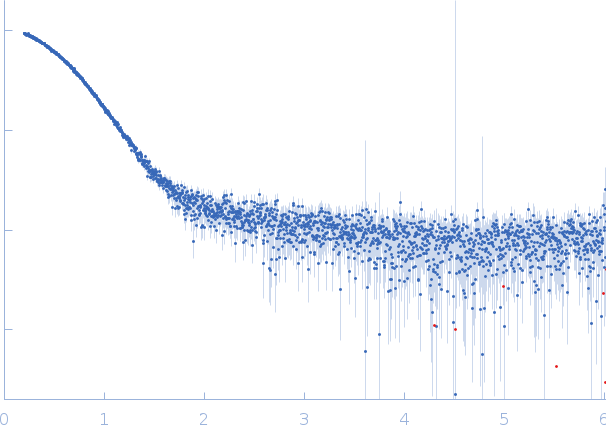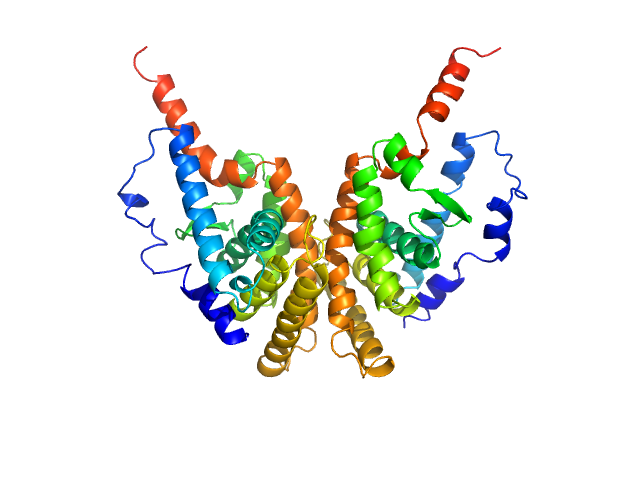| MWexperimental | 45 | kDa |
| MWexpected | 51 | kDa |
| VPorod | 60 | nm3 |
|
log I(s)
2.19×101
2.19×100
2.19×10-1
2.19×10-2
|
 s, nm-1
s, nm-1
|
|
|
|

|
|
Synchrotron SAXS
data from solutions of
Retinoic acid receptor RXR-alpha ligand binding domain (LBD)
in
20 mM Tris, 100 mM NaCl, 100 mM KCl, 5% glycerol, 2 mM Chaps, and 5 mM DTT, pH 7.5
were collected
on the
EMBL X33 beam line
at the DORIS III, DESY storage ring
(Hamburg, Germany)
using a Pilatus 2M detector
at a sample-detector distance of 2.7 m and
at a wavelength of λ = 0.15 nm
(I(s) vs s, where s = 4πsinθ/λ, and 2θ is the scattering angle).
One solute concentration of 5.60 mg/ml was measured
at 10°C.
Eight successive
15 second frames were collected.
The data were normalized to the intensity of the transmitted beam and radially averaged; the scattering of the solvent-blank was subtracted.
Storage temperature = UNKNOWN
Tags:
X33
|
|
|||||||||||||||||||||||||||